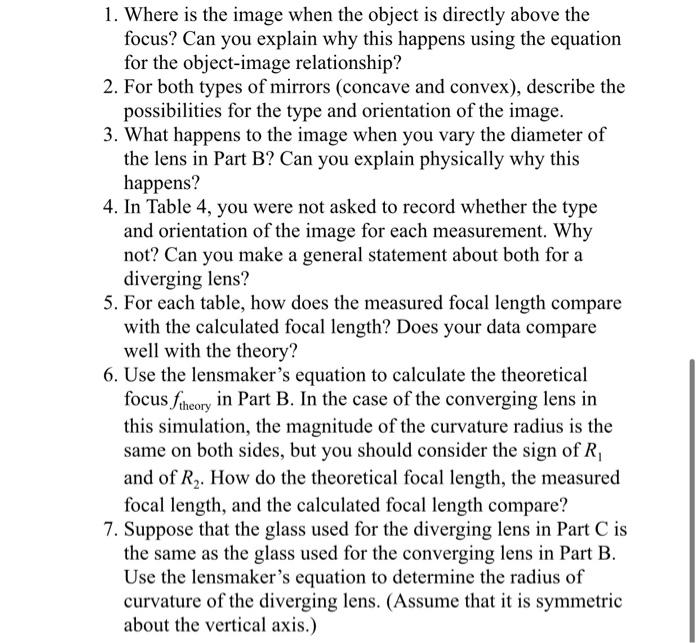
1. Where is the image when the object is directly above the focus? Can you explain why this happens using the equation for the object-image relationship? 2. For both types of mirrors (concave and convex), describe the possibilities for the type and orientation of the image. 3. What happens to the image when you vary the diameter of the lens in Part B? Can you explain physically why this happens? 4. In Table 4, you were not asked to record whether the type and orientation of the image for each measurement. Why not? Can you make a general statement about both for a diverging lens? 5. For each table, how does the measured focal length compare with the calculated focal length? Does your data compare well with the theory? 6. Use the lensmaker's equation to calculate the theoretical focus fheory in Part B. In the case of the converging lens in this simulation, the magnitude of the curvature radius is the same on both sides, but you should consider the sign of R and of R2. How do the theoretical focal length, the measured focal length, and the calculated focal length compare? 7. Suppose that the glass used for the diverging lens in Part C is the same as the glass used for the converging lens in Part B. Use the lensmaker's equation to determine the radius of curvature of the diverging lens. (Assume that it is symmetric about the vertical axis.)
没有找到相关结果